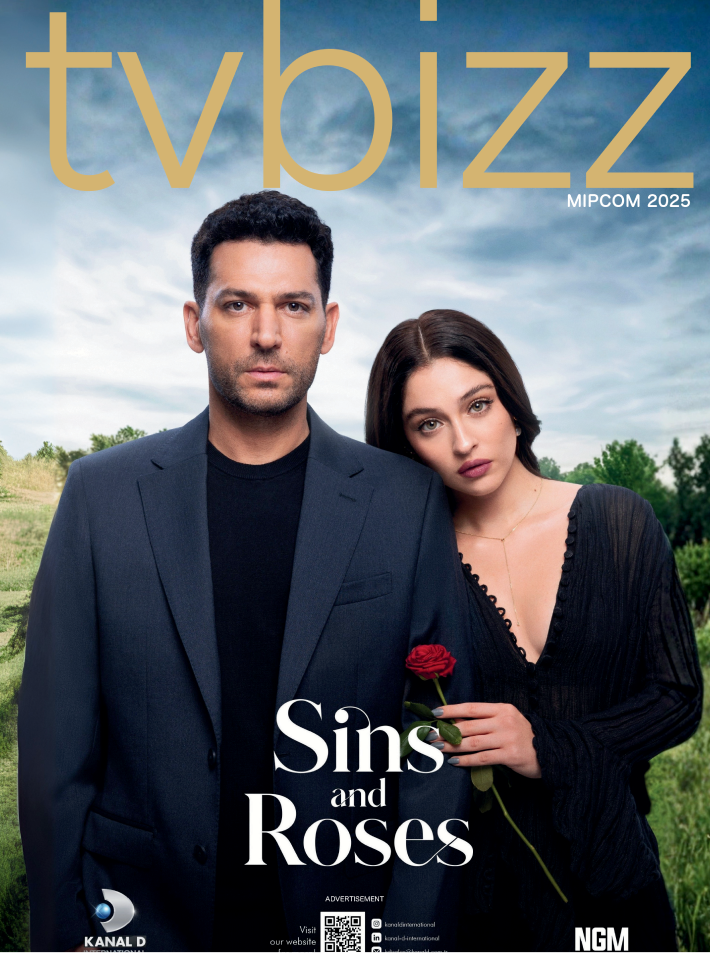Format rights: plagiarism and protection

The Masked Singer
The topic of format rights protection has once again emerged on top of the agenda of the international TV industry following the recent dispute in Ukraine between Media Group Ukraine (MGU) and 1+1 Media regarding worldwide hit The Masked Singer. The former is accusing the latter of copying the elements of the Korean format in its title Masquerade. 1+1 claims that its production is based on the Romanian show Mysteries in the Spotlight – a former finalist in the PITCH & PLAY LIVE! format contest co-organized by CEETV and NATPE, but MGU, distributor Fremantle and format owner MBC have detected too many similarities to the Korean format that are not present in the Romanian original.
What makes the case more suspicious is the fact that 1+1 was actually among the bidders for the rights to The Masked Singer in Ukraine, but lost to MGU which offered the highest bid. Later, 1+1 decided to adapt Mysteries in the Spotlight and the first season of Masquerade was wrapped up several days ago.
The Format Recognition and Protection Association (FRAPA) was also asked to study the potential copyright infringement and ruled that 1+1’s show is 73% similar to The Masked Singer. Subsequently, the Ukrainian channel once again denied all allegations and noted that according to FRAPA’s rulebook a show must be at least 80% identical in order to be considered a copy.
Eventually, as in all other similar cases around the world, the dispute will be decided by a local court with the litigation currently underway.
In the meantime, we talked to several top international executives about the problems of plagiarism which still persist in the television industry and what are some of the best practices from their experience in the protection of format rights.
Carlotta Rossi Spencer, Head of Format Acquisitions at Banijay, notes: “Formats are not easy to protect. The main reasons for this are: the TV industry follows trends; one broadcast anywhere is not always enough to protect a format from being copied; elements can be modified in order for an idea to effectively not be considered a copy.
Let me elaborate. The fashion industry uses databases, local seekers, analysts to study up-and-coming trends. The TV industry does the same. This is why fashion runways tend to launch the same must-have items at the same time and the similar formats tend to pop up in different parts of the world almost simultaneously. So, the number one rule is always to have the strongest format structure. There is no room for grey areas, there is no room for interpretation. The format follows precise rules and its underlying structure is solid, unbreakable.”

Jonathan Tuovinen, Head of International at Rabbit Films, adds that they always register their formats with FRAPA before launching them internationally: “It’s just a way to formalize your show as a format, and also a good backup in case there is an issue at a later time. I’d also keep a very good archive on who and when you send your show ideas to.”
Ms Rossi Spencer agrees: “The best way to protect a format is to register it with local entities that protect rights (where available). It is also advisable to register formats with FRAPA.”
Yulia Sumacheva, CEO WeiT Media, a Banijay Group company, adds: “In Russia, it is possible to protect individual elements of a format: script, music, graphics, characters, and design, but not the format itself. Trademark protection covers the title, and the patent law - know-how.
As practice shows, the problem is that there is no exact definition of a “TV format”. Neither domestic nor international legislation considers the TV format as an independent object of intellectual property. Each time, judges in the appropriate instances have to understand a variety of subjective points of view and discover what exactly it meant in a particular claim. Thus, the judicial practice seeks an individual approach to each case regarding television formats, while format creators and copyright holders, in turn, develop out-of-court methods of protection: they conclude non-disclosure and licensing agreements, use the rules governing the transfer of know-how (the technical side of format production), and also register titles, logos, slogans as trademarks.”
This is why you can have shows in the same area, according to Rossi Spencer this is “because their format structures are different enough to cater to diverse necessities.” She also believes that “It is mandatory to be the first to air or, even if second, to air in a key territory. This results in being able to communicate to the industry that you were the first, you have the top-level show and anyone that comes after is simply…second.”
And she also points out another major factor: “The issue regarding where it airs and how it airs is also delicate. Some premieres are stronger than others simply because they air in one country instead of another. These are bound to receive more attention and be recognized as the “first show” to air, thus turning all other shows in the same space into mere copycats. Having said all this, there is always room for creatives to come up with shows that are indeed in the same space but are different enough not to be considered the same thing.”
Weit Media experienced this in their practice, as Ms Sumacheva tells us: “In 2015, the Arbitration Court of the city of Moscow and the 9th AAC denied us, as copyright holders and creators of the Russian adaptation of Your Face Sounds Familiar, a demand to prohibit a competing channel from releasing a similar project called Toch-v-Toch due to copyright infringement. The courts recognized the very fact of using the concept by the defendant, but then referred that, according to the Civil Code, ideas and concepts are not protected by copyright.”

Mr Tuovinen agrees that it is hard to track differences between formats when it comes to legal matters: “This is of course more a matter of interpretation than a fact copying a show’s name, logo or any recognizable visual elements are quite easy ones to identify as violations. But making a format about a similar subject matter is a tricky one. I’d say that if the broadcaster or production company in question had been pitched the existing format, and they decided not to buy it, but to make their own very similar copy, that could be argued to be a violation as well.”
According to Rossi Spencer, there is still no clear-cut approach to such cases: “I think it really depends – one rule doesn’t apply to all in this case. There are instances where legal litigation is the only way forward. If one show is blatantly a copy of another and the “culprit” of the copy doesn’t admit to this, continues to do business with it and communicates false statements, then legal procedures are the only way forward.
Overall, business ethics is what our industry is based on. This is why, although many shows out there may seem similar, there are not so many litigations. Best practice and respect are always key, in any business, and they are even more in ours, where products – programs in our case – air on national TV, OTT platforms, cable, and cannot escape scrutiny.”
Sumacheva, who says she is following the case in Ukraine closely, stresses: “Business ethics certainly exist and work. I prefer to act openly - properly structured negotiations often help stay out of court. We all understand perfectly well that there is no legislative or international leverage that would deter foreign and even domestic producers from plagiarism. In this regard, there is also a rather heterogeneous judicial practice. There are many examples, both positive and negative, when format protection was denied.”
At Rabbit there have been no such cases, Tuovinen tells us: “We’ve been lucky that we haven’t had any litigation as of yet. But also, all of the shows in the Rabbit format catalog have already been on air in at least one territory prior to us launching them internationally, so we don’t have the issues that sometimes come with paper formats. I think the formats industry for the main part is a very self-regulating industry, where if someone is seen to be copying shows, then in the end a lot of companies will refuse to work with them. I also think that a format fee is a small price to pay for access to consultants, experts and a production bible. So, it’s always better to buy the original!”
Sumacheva adds: “There are many actions that can be taken during the development, filming, and implementation of a format. FRAPA experts provide a fairly complete list of recommendations. For example, each material related to the format must contain the date of creation and the name of the author, or the name of the company. Another important point is that when negotiating with potential buyers, it is always better to conclude a non-disclosure agreement. Introducing a trade secret mode inside the company is also a good idea. Creating the Format Bible, filming a pilot episode of the program, concluding a licensing agreement are the main steps to maximize your product protection.”
What makes the case more suspicious is the fact that 1+1 was actually among the bidders for the rights to The Masked Singer in Ukraine, but lost to MGU which offered the highest bid. Later, 1+1 decided to adapt Mysteries in the Spotlight and the first season of Masquerade was wrapped up several days ago.
The Format Recognition and Protection Association (FRAPA) was also asked to study the potential copyright infringement and ruled that 1+1’s show is 73% similar to The Masked Singer. Subsequently, the Ukrainian channel once again denied all allegations and noted that according to FRAPA’s rulebook a show must be at least 80% identical in order to be considered a copy.
Eventually, as in all other similar cases around the world, the dispute will be decided by a local court with the litigation currently underway.
In the meantime, we talked to several top international executives about the problems of plagiarism which still persist in the television industry and what are some of the best practices from their experience in the protection of format rights.
Carlotta Rossi Spencer, Head of Format Acquisitions at Banijay, notes: “Formats are not easy to protect. The main reasons for this are: the TV industry follows trends; one broadcast anywhere is not always enough to protect a format from being copied; elements can be modified in order for an idea to effectively not be considered a copy.
Let me elaborate. The fashion industry uses databases, local seekers, analysts to study up-and-coming trends. The TV industry does the same. This is why fashion runways tend to launch the same must-have items at the same time and the similar formats tend to pop up in different parts of the world almost simultaneously. So, the number one rule is always to have the strongest format structure. There is no room for grey areas, there is no room for interpretation. The format follows precise rules and its underlying structure is solid, unbreakable.”

Yulia Sumacheva, CEO WeiT Media
Jonathan Tuovinen, Head of International at Rabbit Films, adds that they always register their formats with FRAPA before launching them internationally: “It’s just a way to formalize your show as a format, and also a good backup in case there is an issue at a later time. I’d also keep a very good archive on who and when you send your show ideas to.”
Ms Rossi Spencer agrees: “The best way to protect a format is to register it with local entities that protect rights (where available). It is also advisable to register formats with FRAPA.”
Yulia Sumacheva, CEO WeiT Media, a Banijay Group company, adds: “In Russia, it is possible to protect individual elements of a format: script, music, graphics, characters, and design, but not the format itself. Trademark protection covers the title, and the patent law - know-how.
As practice shows, the problem is that there is no exact definition of a “TV format”. Neither domestic nor international legislation considers the TV format as an independent object of intellectual property. Each time, judges in the appropriate instances have to understand a variety of subjective points of view and discover what exactly it meant in a particular claim. Thus, the judicial practice seeks an individual approach to each case regarding television formats, while format creators and copyright holders, in turn, develop out-of-court methods of protection: they conclude non-disclosure and licensing agreements, use the rules governing the transfer of know-how (the technical side of format production), and also register titles, logos, slogans as trademarks.”
This is why you can have shows in the same area, according to Rossi Spencer this is “because their format structures are different enough to cater to diverse necessities.” She also believes that “It is mandatory to be the first to air or, even if second, to air in a key territory. This results in being able to communicate to the industry that you were the first, you have the top-level show and anyone that comes after is simply…second.”
And she also points out another major factor: “The issue regarding where it airs and how it airs is also delicate. Some premieres are stronger than others simply because they air in one country instead of another. These are bound to receive more attention and be recognized as the “first show” to air, thus turning all other shows in the same space into mere copycats. Having said all this, there is always room for creatives to come up with shows that are indeed in the same space but are different enough not to be considered the same thing.”
Weit Media experienced this in their practice, as Ms Sumacheva tells us: “In 2015, the Arbitration Court of the city of Moscow and the 9th AAC denied us, as copyright holders and creators of the Russian adaptation of Your Face Sounds Familiar, a demand to prohibit a competing channel from releasing a similar project called Toch-v-Toch due to copyright infringement. The courts recognized the very fact of using the concept by the defendant, but then referred that, according to the Civil Code, ideas and concepts are not protected by copyright.”

Jonathan Tuovinen, Head of International at Rabbit Films
Mr Tuovinen agrees that it is hard to track differences between formats when it comes to legal matters: “This is of course more a matter of interpretation than a fact copying a show’s name, logo or any recognizable visual elements are quite easy ones to identify as violations. But making a format about a similar subject matter is a tricky one. I’d say that if the broadcaster or production company in question had been pitched the existing format, and they decided not to buy it, but to make their own very similar copy, that could be argued to be a violation as well.”
According to Rossi Spencer, there is still no clear-cut approach to such cases: “I think it really depends – one rule doesn’t apply to all in this case. There are instances where legal litigation is the only way forward. If one show is blatantly a copy of another and the “culprit” of the copy doesn’t admit to this, continues to do business with it and communicates false statements, then legal procedures are the only way forward.
Overall, business ethics is what our industry is based on. This is why, although many shows out there may seem similar, there are not so many litigations. Best practice and respect are always key, in any business, and they are even more in ours, where products – programs in our case – air on national TV, OTT platforms, cable, and cannot escape scrutiny.”
Sumacheva, who says she is following the case in Ukraine closely, stresses: “Business ethics certainly exist and work. I prefer to act openly - properly structured negotiations often help stay out of court. We all understand perfectly well that there is no legislative or international leverage that would deter foreign and even domestic producers from plagiarism. In this regard, there is also a rather heterogeneous judicial practice. There are many examples, both positive and negative, when format protection was denied.”
At Rabbit there have been no such cases, Tuovinen tells us: “We’ve been lucky that we haven’t had any litigation as of yet. But also, all of the shows in the Rabbit format catalog have already been on air in at least one territory prior to us launching them internationally, so we don’t have the issues that sometimes come with paper formats. I think the formats industry for the main part is a very self-regulating industry, where if someone is seen to be copying shows, then in the end a lot of companies will refuse to work with them. I also think that a format fee is a small price to pay for access to consultants, experts and a production bible. So, it’s always better to buy the original!”
Sumacheva adds: “There are many actions that can be taken during the development, filming, and implementation of a format. FRAPA experts provide a fairly complete list of recommendations. For example, each material related to the format must contain the date of creation and the name of the author, or the name of the company. Another important point is that when negotiating with potential buyers, it is always better to conclude a non-disclosure agreement. Introducing a trade secret mode inside the company is also a good idea. Creating the Format Bible, filming a pilot episode of the program, concluding a licensing agreement are the main steps to maximize your product protection.”









































